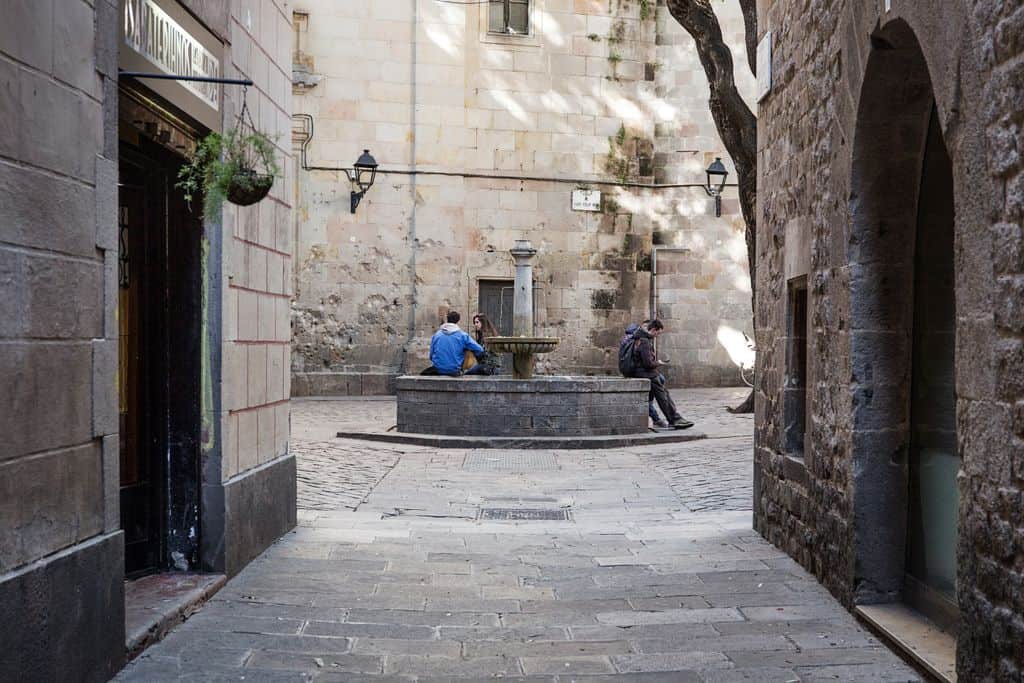Plaza Sant Felip Neri, one of the most emblematic and historic corners of Barcelona, is undergoing significant transformations. Located in the heart of the Gothic Quarter, the square is witness to an ambitious project aimed at improving accessibility without compromising its historical value.
 Historical and cultural context
Historical and cultural context
Plaza Sant Felip Neri is a site of great cultural and social importance in Barcelona. With its central fountain and the marks of history on its walls, the square has been a meeting and reflection point for residents and tourists. However, the difficulty of access due to its uneven paving and high steps has been a constant concern.
Renovation project details
The project, which began at the end of June, has an estimated duration of one month. The works involve the reconfiguration of the pavement, using techniques that respect the original appearance but introduce more durable and mobility-friendly materials. In addition, the intervention has been planned in phases to ensure minimal disruption to the daily life of the neighborhood.
Importance of accessibility
Accessibility is a fundamental right and Barcelona is committed to making its urban spaces accessible to all. Plaza Sant Felip Neri, given its location and significance, is a priority in this effort. The improvements will not only facilitate access for people with reduced mobility, but will also benefit families with strollers and elderly visitors who frequent the area.
Touring the most beautiful squares in Barcelona (II)
Impact on the community and local commerce
The stores and establishments around the square depend heavily on the constant flow of visitors. Improving accessibility could mean an increase in the number of daily visitors, which would have a positive impact on the local economy. Merchants have expressed their support for the project, despite temporary inconvenience during the construction phase.
Citizen participation and community response
The project was preceded by community consultation sessions, where residents and merchants were able to express their concerns and suggestions. This collaborative approach has been fundamental in designing an intervention that responds to the real needs of those who frequent the square.
When Barcelona became a movie city
Sustainability and future of the project
Part of the city’s commitment to sustainability is reflected in the choice of materials and construction techniques. Paving is being used that is not only durable but also environmentally friendly, minimizing the environmental impact of the works.
Long-term vision
Beyond the immediate improvement in accessibility, the project seeks to be a model for future renovations in the old city. With this initiative, Barcelona demonstrates that it is possible to balance heritage preservation with modern needs for accessibility and public use.
In conclusion, the renovation of Plaza Sant Felip Neri is a reflection of how Barcelona approaches contemporary urban challenges while respecting its rich history and culture. This project not only improves the functionality of a significant space, but also reinforces the city’s commitment to inclusion and accessibility for all its citizens and visitors.


 Historical and cultural context
Historical and cultural context
